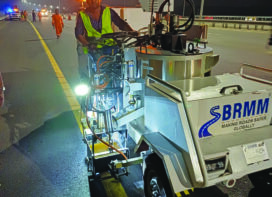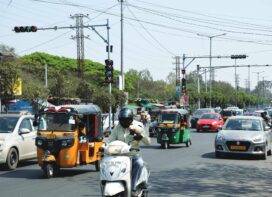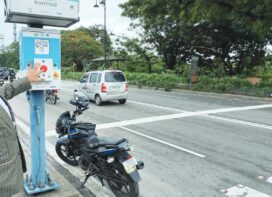Trends in Data Analysis
Methods such as data analytics, machine learning and artificial intelligence are much in discussion now. Again, it is important to remember that these are tools and not solutions. All these methods require good quality and in-depth data and for effective utilization of such tools. In addition, the data being collected should be uniform, standardized, accurate and reliable.
Traffic data is the next big thing. It is the heart of transport projects and road safety.
Fatal road accidents are a good example to explain the problems of data collection in India. Firstly, we still do not have a clear definition of a fatal road accident. Secondly, there is no clear laid out procedures on how to deal with it. Currently all fatal accidents and fatalities are counted when they are registered under the Indian Penal Code Section 304(A). But this section requires that every fatal road accident should have an accused and a victim. So, what happens if this is a single vehicle accident such as a motorcyclist skidding and falling or a bus footboard passenger falling off the bus? Also, what if the accused vehicle is not known such as in a hit-and-run case? In such cases, how does one identify the accused?
Such cases are now also being considered by the police under CrPC Section 174 to first ascertain whether it is suicide, murder or a road accident related fatality. But, once such cases are confirmed as fatal road accident cases, are the cases and the resulting fatalities counted and reported under road accidents? Unfortunately, the findings indicate that the answer is NO. Hence, many cities and states that are reporting reductions in fatalities need to provide what they are counting as fatal accidents and fatalities. Therefore data definitions and collection need to be standardized, accurate and transparent. Otherwise, the data is open to interpretation and may not reflect the actual ground realities.
Implementing a successful system
Currently the Motor Vehicle Act, 1988, Chapter VIII – Control of Traffic, Section 135 provides state governments the authority to initiate schemes for in-depth studies on causes and analysis of motor vehicle accidents. In addition, state road safety authorities and committees are being setup to monitor and control road accidents. While there are good policies available, implementing a successful system still requires a lot of capacity building towards educating and empowering the road safety stakeholders on the science behind road safety and on creating data-driven, targeted and result- oriented action plans for improving road safety.
Rajaraman explained, “ The recent ministry notification about increasing fines and speed limits is a good example. While increasing fines is a good deterrent, the problem on the ground is the poor enforcement techniques employed by police officers and motor vehicle inspectors, especially on highways and rural roads. If the enforcing officer on the road is not adequately trained to adopt data-led enforcement techniques and conducting enforcement operations in a safe and professional manner, then the fines may not have much impact on improving road safety in the long run.”
Hence, we need to bring in science in road safety decision/ policy making through adoption of data-driven techniques. Fortunately, we are moving in this direction slowly but steadily.
Data-driven, road safety management is common practice when designing and implementing a road safety.
Bengaluru-based Innovary Technologies, a Traffic Data Collection and Analysis firm has helped many transport professional (local as well as government agencies) to use data as a primary thing before making any transport related decisions. Innovary Technologies are working with top Traffic professional across the world (from the US, the UK, Middle East, Australia and Germany).
 TrafficInfraTech Magazine Linking People Places & Progress
TrafficInfraTech Magazine Linking People Places & Progress


